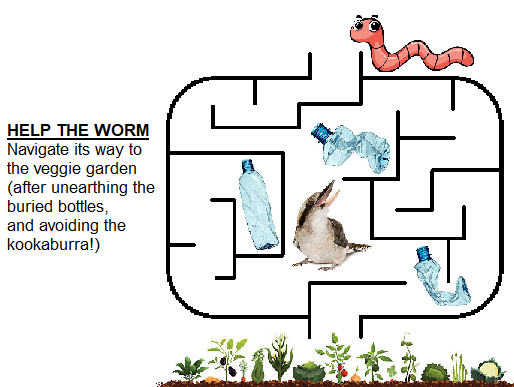More games and activities…
-

Snap (Ages 4 and up)
Possible Themes - Transportation, Shopping or Children’s Hobbies Throughout History
Used Cardboard - Cut out Card shapes - Glue on white paper and Draw Pictures of Horse and Cart, Automobiles, Old fashioned Bicycles, E-Scooters, (Two of each Card). Lay the cards face down and the AIM is to turn them over to remember where the other pair is. Cards can be dealt amongst the players and turned over. Collect the pairs you find. The one with the most pairs calls Snap.
Later older players can talk about how energy and fuel supply and lithium batteries have reshaped transportation over time, based on the stories the cards inspired. Or the Senior Years can discuss the life cycle of the machines.
Players can reflect back on the biodegradability of the games or toys are, and what they do with the game materials or toys when they are finished with them. For the more advanced, they can look in to a life cycle analysis of young people's devices and toys.
Image by Seb C.
-

Join the Dots and Paint by Numbers (Ages 5-14)
Join the Dots (Ages 5-9)
Teachers or older students can help younger pupils design and sketch *Join the Dots Illustrations of environmentally inspired themes relevant to their lessons. Sketch up a solar powered Go-Cart, vegetable garden, or E-bike that gets revealed as the dots are joined. Great way to learn to combine a maths lesson - learning to count and instil a sense of eco-creativity.
Paint By Numbers (Ages 9-14)
As with the Join the Dots game, here the object is to imagine completed coloured in image that consists of the painting of an environmental theme. To render the picture in stages, it needs to be presketched but then coloured in by sectioning off the image with paint colour numbers and corresponding colours. For eg. the image representing the clouds gets painted with colour 8 representing smokey grey. This is a more Advanced art project for students to design a paint by numbers piece.
Mermaid Image courtesy of Wikimedia Commons
-

Puzzles and Word Search Activities (Ages 7 and up)
Make an A3 size environmentally themed picture and glue the page with the picture on to a piece of cardboard of similar size. Then, cut the picture in to different jig saw puzzle pieces, place them down on a table face up and the aim of the game is to reconnect the pieces to recreate the original picture. Alternatively, think up eco themed pictures including a bicycle, a bus, a reusable coffee cup, bottle or drinking fountain, make two or four of the same picture so that the cards can be turned over and played as a memory game.
Similarly, build eco-themed phrases or words in to a Word Search Box.
Memory and visual games can help drive behaviour change (and a change of heart) by stirring up a subconscious response in the participant which helps build prompts to action.
Image - Courtesy of Seb.C
-

Mazes and Board Games (Ages 7 and up)
This MAZE helps the native or indigenous wildlife negotiate their way past the harmful exotic predators to the protected sanctuary. Young children can also create their own treasure maps with environmental messages and outcomes, and add in riddles, clues and other tempters to get the children engrossed in the activity.
Commercial environmental board games available include the Keep Cool, Wild Seed Game, Gaia's Garden, Oceanopoly, Earthopoly, and My First Three Nature Games (Bioviva). Here is an Eco Action Games site - which sells various games.
Create a simple Board Game, with a sustainability aim, such as a recycling goal. One example is to draw in bins in corners nearer the bottom, (roll the dice using appropriate rubbish tokens, and hop a long) opening out in to pictures of different types of rubbish and food scraps, at the opposite end. The AIM of the game is to get the relevant rubbish to the correct bin.
The Idea of Board Game “Snakes and Ladders” can be adapted to an Eco Theme - the snake could take the Orangutan away to a safer Habitat Location and the Ladder could represent joining up with the Orangutans family (Game with both positive outcomes). Using a waste disposal theme the snake could dispatch Rubbish down in to the Landfill/Tip and the Ladder could take it back up to the Recycling Plant. (A little imagination always helps).
Puzzle Image - Seb.C.
Star Fish made from tin cans - Ocean Grove
Laine Hogarty, Artist
Crafty Design Activities
Goal: Enticing young people to think about sustainability and to love, respect and step in to protect their environment…
How: Adapt Outdoor games, activities and Event Days by building in some form of environmental purpose, sensitivity or message.
And Really, How: *Input the Wow factor in to How.
Young people of all ages can go crazy making Wizard gowns and other crazy outfits out of clothing off-cuts or other non-hazardous waste materials. The Class can of course go all out as did the Cambodian Space Project, with their Trash Fashion Show which went on tour around Cambodia to highlight the huge problem of plastic waste in South East Asia. These events could be run as Show and Tell or Fancy Dress Days for the littlies, or as ‘all-out’ Competitions and End of Year Galas for the Older Year Levels.
School pupils are encouraged to follow local example - Decay-Mart extension of Trash Fashun - a Pop Up Shop in Errol St North Melbourne, highlighting the extent of Fast Fashion’s impact on the waste and pollution stream. Events held provided opportunities for kids to make Art, Sculptures, Monuments out of Textile waste with some built to be destroyed immediately. (Ironic display of what Fast Fashion is - here today, gone tomorrow).
Students can get their trashy inspiration from Rob Greenfield - who made head-lines cavorting about with a month’s worth of waste strapped to his body. Of course it wasn’t just textile waste!
Activities include the design and construction of a Practical Object, or a Work of Art or even Sculpture made of recycled materials. (Long Day Care Centres, Art teachers and After School educators are of course all doing this, already in their Art programmes!)
The art piece could be purely aesthetic or more functional, such as a piece of jewellery, a headband, or a skipping rope made from recycled plastic bags. It could be something as basic, as making wrapping paper out of recycled paper materials, greeting cards, Christmas decorations, a Sun Visor, or a tree out of toilet rolls. Readers will get a lot of inspiration on how to use recycled objects from the Internet and You Tube.
Nothing is quite as powerful as the sight of a ‘Mock-Up’ Whale (sculpture) beaching itself on the seashore south of Manila staged by Green Peace Philipines to draw attention to the local issue of marine debris pollution. (See below - Mobile View).
Junior Years (Ages 5 and up)
Easier projects for younger pupils include designing and making bookmarks, basic calendars, Birthday and other greeting cards, invitations, party decorations and hats, and kites, all constructed out of recycled cardboard, plastics, and other art materials and colouring pencils with fun environmental themes. A Birthday Card showing the way leaves fall off the trees and on to the ground get recycled by remaining as a mulch layer for hummus and water retention.
Activity books such as the Lorax Energy Star Activity book, building all of these environmentally themed ideas and activities in, can be the final product.
Middle School Years (Ages 7 and up)
As a Peer Education project for Art - make up Colouring Books with pictures of endangered species, recycling, or other environmental themes. One example is entitled Nature's Recyclers from an online site: EEK - Environmental Education for Kids.
The creative tasks set out here may involve team-work, and work well in composite classes, where older kids can encourage or teach the younger ones to learn through doing and imagining. (AKA Peer to Peer Education)
Children of all ages can share environmentally themed stories, and their older peers can help them with prompts, signboards, and pictures.
See also websites along the lines of - Kids Teaching Kids.
Older Students (Ages 10 and over) can have fun designing Eco-Minded Activity Books for the littlies along the lines of the Invader Rangers and in these Activity Books they might include pictures of local invasive species or even threatened species for Colouring in. See above for ideas for Word Searches with eco themes, and eco-themed Crosswords as would suit Year 1 to 4's etc. The older pupil gets to tease out and learn about the material, while also working out how to make the material more appealing to impart to the younger grades.
For the Senior years - Cartoons can be drawn - either by hand or for the more digitally minded, by computer with environmentally inspired themes. The cartoons can be basic or more detailed comic strips, with stories with a subtle or more overt message. For those who need some inspiration - here are some great Comic Artist names to look up, but don't be put off as these cartoonists have been penning their craft for years! : Sepponet, Mike Swofford, Max Gustafson, and our favourite, Rohan Chakravarty.
Skip to Out in Nature Education page




